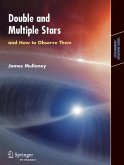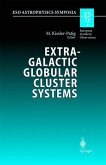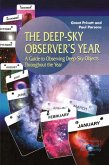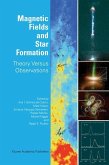This volume presents results from the ESO workshop Multiple Stars across the H-R Diagram, held in Garching in July 2005. It covers observations of multiple stars from ground and space, dynamical and stellar evolution in multiple systems, formation and early evolution of multiple stars, and special components of multiple stars. The book reviews the current state of observational and theoretical knowledge and discusses future studies for further progress in the field.
The ESO workshop "Multiple Stars across the H-R Diagram" was held in Garching on 12-15, July 2005. The topics included observations of multiple stars from ground and space, dynamical and stellar evolution in multiple systems, e?ects of the environment on multiplicity, formation and early e- lution of multiple stars, and special components of multiple stars (chemically peculiar stars, blue stragglers, brown dwarfs, etc.). Stars show a marked tendency to be in systems of di?erent multiplicity, 7 ranging from simple binaries and triples to globular clusters with N?10 . Modern observations give a frequency of binary and multiple stars in the Galactic ?eld of up to 70%, and between 5% and 20% of these systems are at least triple. There is evidence that the degree of multiplicity increases with primary mass. Many known multiple systems are too wide to have s- ni?cant physical interaction between their components. However, tidal and N-body dynamical interactions are important even in relatively wide s- tems and probably lead to the shrinkage of inner orbits. This sets the stage for spectacular evolutionary processes such as Roche-lobe over?ow, me- ers, supernovae, formation of special components, etc. Only recently did we realize that some of these processes require at least three stars. Theformationofmultiplesystemsremainsadi?cultandchallengingpart of astrophysics, although it has been addressed at the Workshop only brie?y.
The ESO workshop "Multiple Stars across the H-R Diagram" was held in Garching on 12-15, July 2005. The topics included observations of multiple stars from ground and space, dynamical and stellar evolution in multiple systems, e?ects of the environment on multiplicity, formation and early e- lution of multiple stars, and special components of multiple stars (chemically peculiar stars, blue stragglers, brown dwarfs, etc.). Stars show a marked tendency to be in systems of di?erent multiplicity, 7 ranging from simple binaries and triples to globular clusters with N?10 . Modern observations give a frequency of binary and multiple stars in the Galactic ?eld of up to 70%, and between 5% and 20% of these systems are at least triple. There is evidence that the degree of multiplicity increases with primary mass. Many known multiple systems are too wide to have s- ni?cant physical interaction between their components. However, tidal and N-body dynamical interactions are important even in relatively wide s- tems and probably lead to the shrinkage of inner orbits. This sets the stage for spectacular evolutionary processes such as Roche-lobe over?ow, me- ers, supernovae, formation of special components, etc. Only recently did we realize that some of these processes require at least three stars. Theformationofmultiplesystemsremainsadi?cultandchallengingpart of astrophysics, although it has been addressed at the Workshop only brie?y.








